 Some unburned barrens (before we got into the burned area). |  Beginning of the burned area. |
 The compacted, wettish trail was largely unburned. |
 Typical barrens burn. |
 Lily-like plant, likely pink lady's slipper; one site only, somewhat sheltered |
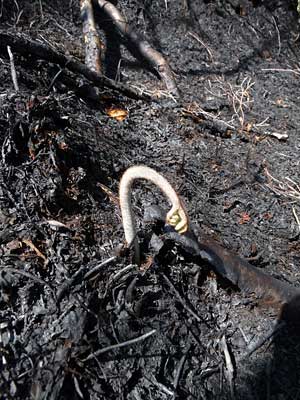 Fern (likely bracken fern); a number sighted.
|
 Cones of black spruce |
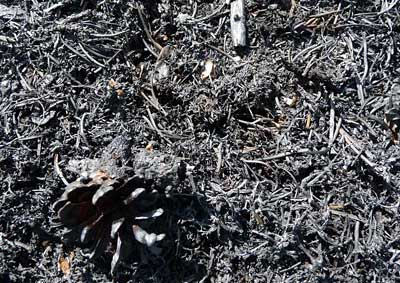 Jack pine cone, several winged seeds are visible on the ground. |
 Area of huckleberry, typically burned off at base. Brown area disturbed with boot to show non-burned duff |
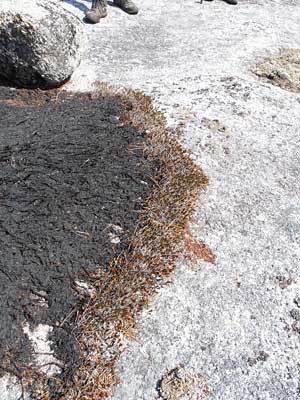 Broom crowberry. |
 Flat Lake in distance. Brown patches are sphagnum areas. |
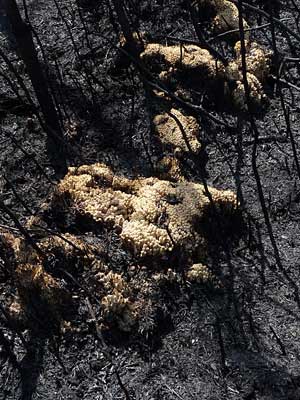 Clump of sphagnum |
 By Flat Lake - Sept 23, 2007. (HFN Field Trip) |
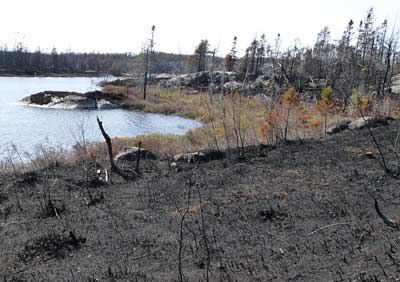 May 15, 2009. |
 Across the lake. |
 Lake edge. |
Fire Photos Home Page

